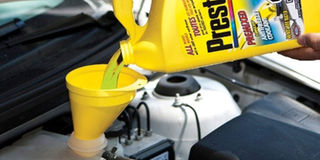Understand your car cooling system

What you need to know:
The car’s cooling system utilises several hoses for transferring the coolant from one part of the cooling system to another. These hoses are usually connected using hose clamps or clips. In order for the hoses to function correctly, they should always be free from cracks or cuts that may cause coolant to leak.
Your car’s engine produces incredibly high levels of heat and the cooling system is essential to lower the temperature that might damage some parts. A car’s cooling system is a complex network consisting of several different subsystems such as:
Coolant
The coolant, or radiator fluid, used in the car’s cooling system is perhaps the most vital part of the system.
The additives in engine coolant help it transfer heat effectively, keep it from boiling and over-pressurising the cooling system, or freezing in cold weather and damaging the engine (hence the term antifreeze).
Water Pump
The water pump is a mechanical pump that pushes the coolant through the radiator and the car’s engine.
Because the water pump is mechanical, it requires a belt to turn the rotor. The water pump provides the pressure that moves the coolant through the engine and radiator.
Thermostat
The thermostat detects the car’s operating temperature. It is also designed to regulate the flow of coolant from the radiator to the engine.
When the engine reaches a certain temperature the thermostat releases the flow of coolant and when the engine is cooler, it restricts it.
Radiator
The radiator is a square or rectangular shaped metal box that fits in front of your engine. It draws in cooler ambient air from the outside to help cool the radiator fluid. It includes a series of tubes and fins where the fluid passes through and is cooled by air drawn into the radiator.
As the coolant moves through the passages, heat is transferred into the fins. Air is forced through the spaces between the metal fins by the motion of the vehicle or the engine’s fan, and heat is radiated into the air (hence the radiator’s name) and away from the engine.
Radiator cooling fan
The radiator-cooling fan is usually located directly behind the radiator. Its function is to pull air through the radiator when the vehicle is operating at slower speeds. It may be mechanical and driven by a belt, or electric and controlled by the thermostat.
Hoses
The car’s cooling system utilises several hoses for transferring the coolant from one part of the cooling system to another. These hoses are usually connected using hose clamps or clips. In order for the hoses to function correctly, they should always be free from cracks or cuts that may cause coolant to leak.




